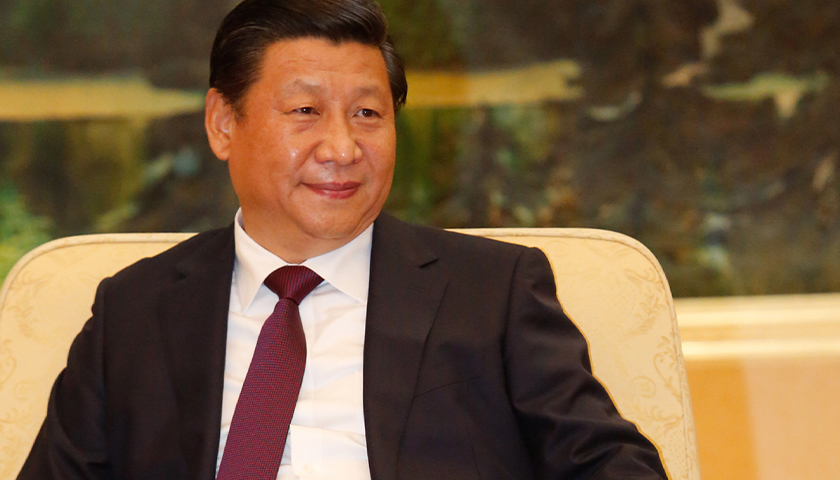by Ellie Gardey
The Chinese government has carried out a massive population control campaign since the 1970s with the hope that it would generate economic prosperity. The government unremorsefully forced women to receive abortions, pressured or forced millions of women to be sterilized, and punished families with multiple children with debilitating fines. More than 300 million children were aborted under China’s one-child policy.
Last week, the Chinese government ended the two-child policy, which had been in effect since 2016, and instead enacted a three-child policy. The new policy is essentially an admission that the Chinese Communist Party’s heinous population control policies will not give it the riches it had hoped for. Instead, the population control program will deliver a demographic disaster, which will ravage the country’s economy for generations.
Many economists recognize that population control never improved China’s economy — that was the result of increased freedom in the marketplace and foreign investment. And the Malthusian crisis the government was so desperately trying to avoid with population control was an entirely false specter.
China needs women to have as many children as possible in order to avert economic catastrophe. But a three-child policy enables the party to pretend that limiting the number of children that couples can have, no matter what that magic number is, was ever a good idea. The three-child policy allows the government to maintain its control over every aspect of Chinese citizens’ lives.
The UN predicts that population contraction will begin in China before 2025 and that by 2030, the number of elderly will have doubled and the country will have lost 67 million working-age people. Others believe that China’s population could already be shrinking or will begin to shrink in 2021 or 2022.
A rapidly aging population will cause decreased productivity, low business expansion, and high labor costs. An increased dependency ratio — the ratio of workers to the elderly and children dependent on them — will leave China with more financial stress on workers and not enough monetary support, including health care and pensions, for the elderly.
China will lose much of its global competitiveness as money that would have been invested to grow its economy will be spent on supporting the disproportionate number of elderly people. The country’s innovation will be stifled, living standards will decrease, and economic growth will slow considerably and perhaps cease altogether.
Liang Jianzhang, a research professor of applied economics at Peking University, called the demographic challenge a “long-term time bomb.”
Evidently, the results from the once-a-decade Chinese census, which were released May 11, set off alarm bells in the Chinese government. The census showed that China’s fertility rate stands at 1.3 children per woman — the fertility replacement level is 2.1 children per woman — and that only 12 million babies were born in 2020. This is the lowest number of births in the country since 1961, a year that immediately followed a famine caused by communist policies that killed tens of millions of people.
There is some dispute over whether China’s fertility rate is even as high as 1.3, seeing as the government has a reputation for fudging its statistics. Yi Fuxian, a professor at the University of Wisconsin-Madison, has estimated that the real fertility rate in China averaged 1.18 over the past decade.
Unusually, the decision to enact the three-child policy came not through the normal channels of a communist party policy conference but rather a meeting of the Politburo, the communist party’s top decision-making group. The meeting was chaired by Xi Jinping himself.
“It’s unprecedented,” Yi told the Wall Street Journal. “It signals how concerned Xi Jinping is.”
The desperation is high, but the party is past the point where it can repair the damage in the near future. Decades of the foolish (and downright evil) population policies will take generations to reverse. After the government enacted the two-child policy in 2016, birth rates rose for one year before sinking ever since. There are no signs that a three-child policy will be able to reverse this trend. The Chinese Academy of Social Sciences reports that China will soon enter into “unstoppable” population decline.
A long-term barrier to reversing China’s sinking birth rates goes much deeper than policy: the government has created a culture that prefers very small families and does not see the value of the sacrifices that come with raising children.
For instance, a 28-year-old Chinese woman, Dong Chang, told the New York Times that millennials in her country don’t see a reason to give up their own wants for a child.
“We are all only children, and to be honest, a little selfish,” she said. “How can I raise a child when I’m still a child myself? And take care of him and feed him at midnight?”
Another problem is that a preference for boys alongside the one-child policy has resulted in a distorted sex ratio achieved by sex-selective abortions and female infanticide. It’s estimated that there are 37 million fewer women in China than men.
Xi Jinping knows that the CCP has made a huge mistake and that the party can’t reverse it. In this case, the CCP’s impulse for authoritarian control and total lack of regard for human rights has not consolidated the party’s control and propelled China’s global power. China’s population control scheme will come back to wreck its economy.
– – –
Ellie Gardey is a reporter for The American Spectator. Follow her on Twitter @EllieGardey.
Photo “Xi Jinping” by Global Panorama CC BY-SA 2.0.




